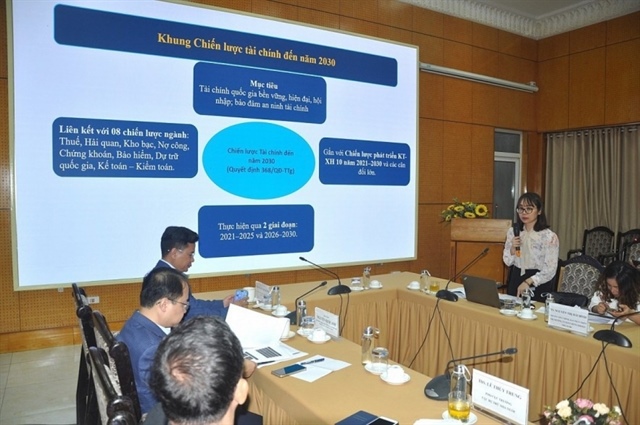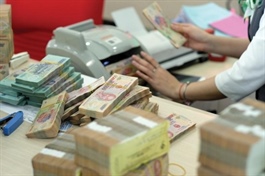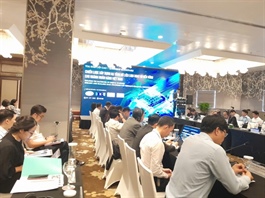Corporate tax landscape undergoing decisive shifts
Corporate tax landscape undergoing decisive shifts
On June 14, the National Assembly approved amendments to the Law on Corporate Income Tax (CIT), effectively reconfiguring how tax incentives are granted to businesses, especially those operating within industrial parks.
This development has drawn the attention of domestic and foreign manufacturers alike, many of whom had long relied on location-based tax holidays as a part of their investment calculations.
Under the 2008 law on CIT, location-based incentives, like a two-year tax holiday and 50 per cent cuts for four more years, automatically applied to enterprises setting up in industrial areas.
This blanket approach has now been done away with. Starting October 1, newly licensed projects will not be solely geographically centred as before, but will also consider a broader range of factors, including the project’s sector, scale, and alignment with national policy goals such as technological innovation and environmental impact.
This shift will not affect projects already enjoying incentives under the existing regime. Those benefits will remain in place for the duration stipulated in investment licences or tax rulings. But the companies considering expansion plans post-October will face the new incentive environment.
If the expansion remains within the same registered business line and licence, it may inherit the original project’s benefits.
But if it constitutes a new line or meets the threshold of an independently accounted project, the amended rules will apply. This provides flexibility for businesses to choose the most beneficial incentive scheme for their operations, demonstrating the government’s willingness to facilitate a favourable environment for investment.
For manufacturing companies, this realignment means that the future of tax benefits lies in what they produce and how they produce it, not where.
In parallel, it is notable that the new law on CIT also introduces stricter controls on deductible and non-deductible expenses. Deductible costs must be documented with proper invoices and non-cash payment receipts. This includes all production-related expenses, and others that do not fall under explicitly banned categories.
Non-cash payments above VND20 million ($800) must comply with VAT rules to be deductible. Businesses are now advised to retain non-cash payment evidence for transactions from $200 to $800 between July and September due to overlapping regulatory timelines between the new law on VAT, taking effect on July 1, and the law on CIT from October 1.
On the other hand, small and medium-sized enterprises may find some relief. Firms with annual revenues up to VND3 billion ($120,000) will be taxed at 15 per cent. Those with revenues between $120,000 and $2 million) will be taxed at a 17 per cent rate.
But there’s a caveat: companies with direct or indirect links to larger firms are excluded to prevent abuse through artificial fragmentation and protect the integrity of these incentives.
The sectors singled out for preferential treatment under the new law are high-tech manufacturing, semiconductors, renewable energy, green hydrogen, electric vehicles, and supporting industries. The eligible projects in these sectors may enjoy a 10 per cent CIT rate for up to 15 years.
Depending on investment scale and legal compliance, other options such as a 10 or 15 per cent rate for the lifespan of the project, or 17 per cent for 10 years or longer, are also possible.
New provisions also address how overseas income and capital gains will be taxed. Foreign income will now be taxed upon accrual, rather than remittance, a change that could affect how multinational firms manage cash flows and tax credits in Vietnam. Foreign digital service providers and e-commerce players have been officially brought into the tax net through permanent establishment rules.
Another change is seen in the capital market. Capital gains from direct or indirect share transfers will be taxed based on gross proceeds, regardless of whether a profit was made. This means CIT approach applies even in loss-making transactions, meaning tax liability arises on the transaction value itself.
Perhaps one of the most forward-looking aspects of the amendment is the enhanced deductibility for research and development, environmental cause, and infrastructure investments.
While exact deduction rates will be clarified in future, the direction is clear: tax rules will favour businesses that contribute to sustainability, digital transformation, or shared infrastructure like roads and utilities within industrial areas.
This final point could prove decisive for manufacturers choosing between status quo operations and strategic upgrades.
Those investing in emissions controls or energy-efficient machinery will now be able to write off these costs more easily, even if they do not generate immediate revenue. The same holds for companies co-financing infrastructure projects that benefit the wider industrial ecosystem.
For investors and companies already in Vietnam or considering entry, this legal change presents both a challenge and an opportunity. The era of automatic tax relief based on geography is ending. What replaces it is a framework that rewards technological innovation, environmental responsibility, and alignment with national economic goals.
In the coming months, detailed regulations will shed light on how the amended law will operate in practice. Companies should use this window to conduct impact assessments, especially if are planning expansions or restructuring into Vietnam’s industrial zones.
- 10:38 16/07/2025




























